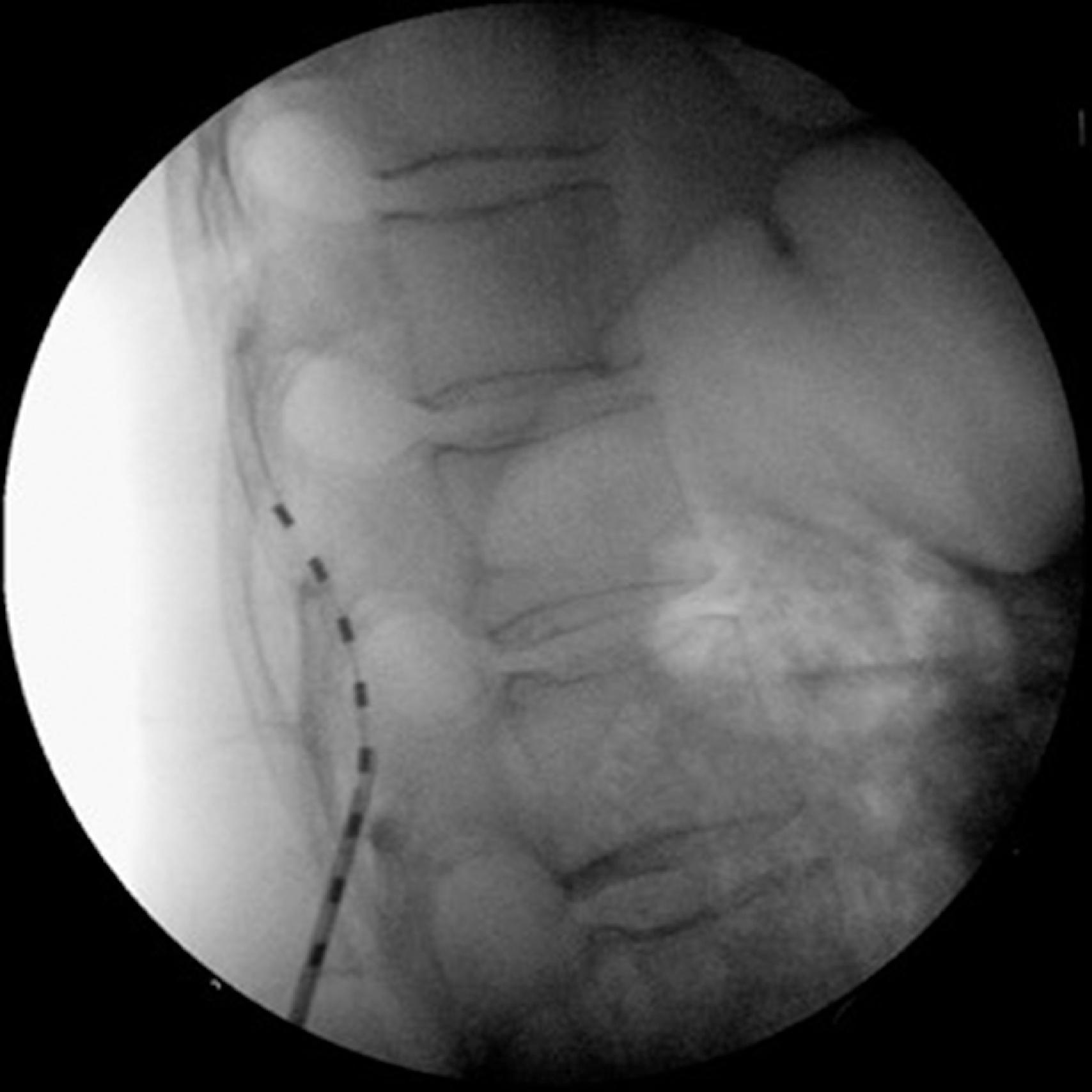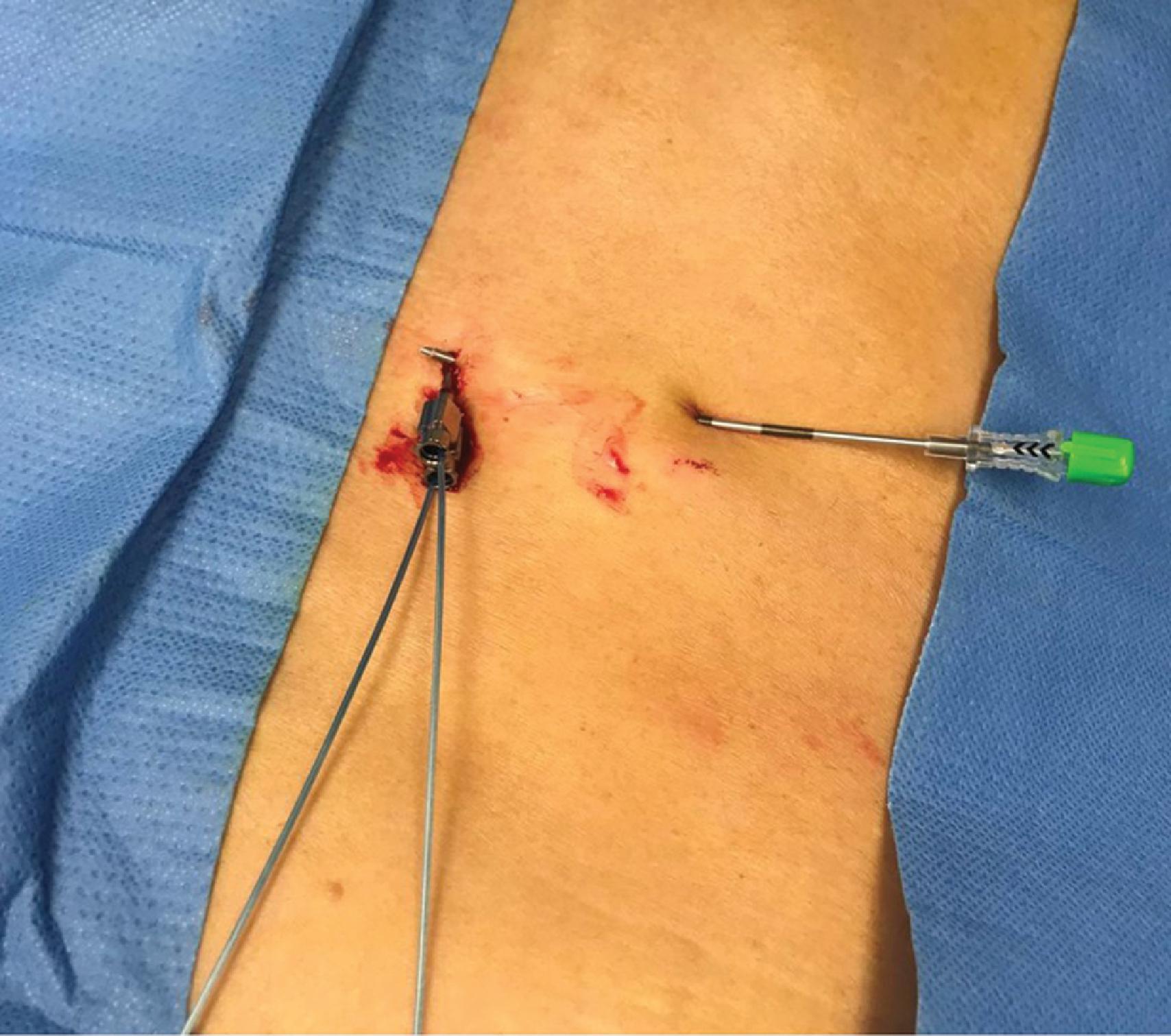Physical Address
304 North Cardinal St.
Dorchester Center, MA 02124
Neuromodulation for chronic pain control has been used for several decades but recently has received much clinical interest mainly based on published improved therapy outcomes. Spinal cord (SCS), dorsal root ganglion (DRG), and peripheral nerve stimulation (PNS) for chronic pain are the mainstay of neuromodulation therapies and will be the focus of this brief review. Over the last 30 years, traditional, low frequency, paresthesia-based (40–90 Hz) SCS stimulation has been used. However, only approximately 30%–50% of patients received more than 50% of pain relief when conventional low frequency SCS therapy was used. , Recently discovered SCS therapies, such as continuous stimulation at a higher frequency (10 kHz), DRG stimulation, closed-loop SCS, or differential target multiplex types of SCS, were found to be superior to traditional SCS when used for chronic severe back and leg pain. Prior studies also showed an additional benefit when traditional low frequency SCS was modified into 1 kHz continuous SCS, , or 500 Hz burst pattern of stimulation.
Initial studies utilizing traditional low frequency SCS suggested activation of the gate control mechanisms, blockade of pain conduction via the spinothalamic tract, supraspinal sympathetic suppression mechanisms, and activation or release of the neuromodulators as major mechanisms of pain control. When SCS is active, unmyelinated afferent fibers (A δ and C) are inhibited by the electrical stimulation of non-nociceptive, myelinated afferent fibers. Blockade of supraspinal sympathetic mechanisms by SCS results in an increase in peripheral blood flow with transitory inhibition of sympathetic vasoconstriction. Activation or release of various neuromodulators such as s-aminobutyric acid (GABA) in the dorsal horn, , glycine release in the extracellular space of the spinal cord, and inhibition of glutamate and aspartate release in the dorsal horn contribute to SCS, resulting in chronic pain relief.
SCS affects heart function by reducing the intrinsic cardiac nervous system activity, preemptive suppression of marked increase in sympathetic outflow, which may then inhibit local heart circuits and decrease the frequency of arrhythmias in ischemic hearts. SCS does not affect coronary blood flow during ischemic conditions, and there is no effect on left ventricular function or left ventricular blood flow distribution. , However, the positive and anti-ischemic effects of SCS include decreased oxygen demand, a significant increase in cardiac pacing tolerance, decreased ST segment depression, and improved myocardial lactate metabolism, which in turn results in an improvement in exercise tolerance and pain relief.
SCS improves ischemic pain in the extremities by a vasodilator effect via calcitonin gene-related peptide (CGRP), peripheral prostacyclin release, and profound neuronal increase of nitric oxide. During SCS, there is a decreased sensitivity to vasoconstrictive sympathetic stimuli, , and an increase in skin blood flow measured by transcutaneous partial oxygen pressure and increased pulse-wave amplitude.
Other mechanisms of SCS include a significant modulatory effect on dorsal horn pain pathways (in addition to dorsal columns) with the recruitment of inhibitory neurons when SCS is used at 10 kHz [27]. Such effects result in additional pain relief, not exhibited greatly when low frequencies (1–1200 Hz) of SCS were used.
Recently, attention has been directed at the effect of SCS on glial cells, in addition to neurons. Glial cells respond to electrical field applications by depolarizing, releasing neurotransmitters, and communicating with each other. The differential target multiplex (DTM) type of SCS is directed toward the modulation of glial cell response. In an acute neuropathic pain model in rodents and mammals, the DTM type of SCS provided superior thermal and mechanical hypersensitivity suppression than low and high (1000 Hz) frequency SCS. During DTM SCS in an animal model of neuropathic pain, gene expression is better restored toward the baseline, non-pain state, when compared to low and 1000 Hz frequency SCS, including those genes related to neuroinflammation.
Finally, a recent development in SCS waveform optimization is a closed-loop stimulation. During closed-loop stimulation, data regarding the spinal cord response to stimulation, measured as evoked compound action potentials (ECAPs), were recorded in real-time. This allows the spinal cord stimulator system to adjust its stimulation parameters to maintain an ideal therapeutic response.
Dorsal root ganglia stimulation (DRG) acts directly on the development of neuropathic pain through inhibition of hyperexcitability and the spontaneous, ectopic firing of neuronal cell bodies contained within the DRG. These processes are known to contribute to central sensitization and clinical allodynia. DRG electrical stimulation reduces the propagation of action potentials to the dorsal horn, affects the release of neuromodulators in the dorsal horn aimed at decreasing excitability and excess neuronal firing and possibly deactivation of hyperexcitability of dorsal horn wide-dynamic range neurons, and an increase in membrane firing thresholds. ,
One advantage of SCS therapy is that patients can undergo temporary SCS trials. The time interval of SCS trials may vary between three and 30 days (most frequently seven to ten days in the United States). Based on the Neurostimulation Appropriateness Consensus Committee (NACC) Guidelines patients should be screened before the trial for the risk factors that may predispose them to complications from SCS, should be referred for a psychological evaluation to rule out any prohibitive psychological disorders that may hinder successful response to neuromodulation, and thorough history and physical examination should be performed (see Chapter 70). If the patient is anticoagulated, the American Society of Regional Anesthesia and Pain Medicine (ASRA) guidelines should be strictly adhered to minimize the risk of catastrophic epidural hematoma formation or any other bleeding. Attention should be given to the patient’s body habitus, as an increase in body mass index may affect procedural technique and predispose patients to postoperative infection. Spine imaging should be carefully reviewed to rule out structural instability that would warrant surgical attention and central canal stenosis that may preclude safe insertion of SCS leads.
The patient is positioned prone, weight-based antibiotics are administered 30–90 min prior to epidural space needle access, and if sedation is required, it should be minimal to facilitate patient-physician communication throughout the procedure.
After obtaining an anterior-posterior fluoroscopic image, the skin was anesthetized, and a Tuohy needle was advanced under intermittent fluoroscopic guidance toward the target interlaminar space. The needle should approach in a paramedian fashion parallel to the spinous process. The angle of approach should be between 30° and 45° to optimize the ability to steer the lead once it has been introduced into the epidural space. Contact may be made with the cephalad aspect of the lamina immediately below the intended epidural space. Next, the needle was advanced using a loss of resistance technique and intermittent lateral fluoroscopy. Once entry into the epidural space is confirmed via loss of resistance, the lead is threaded through the needle and introduced into the epidural space.
The lead was advanced under continuous fluoroscopy. After a satisfactory lead location was established ( Fig. 71.1 ), the Tuohy needles were removed, and leads were secured in a fashion that suits the physician’s preference. This may include suturing in place using manufacturer-provided anchoring devices, suturing to the lead itself, securing it using steri-strips and dressing only, or tunneling leading to possible prolonged trials ( Fig. 71.2 ).


Become a Clinical Tree membership for Full access and enjoy Unlimited articles
If you are a member. Log in here